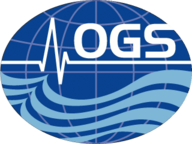Code design¶
Nowadays the visualization of large numerical models is tricky due to the high demand of graphical resources needed. Furthermore scientist cannot take care of the efficiency of both the numerical model and the visualization system. Commercial applications or free ones, like Visit or Paraview, are often used to visualize data and understand their meaning. Unfortunately these applications provide only standard visualizations tools, like quivers or streamplots, and are slow or need datasets converted to specific formats.
Field Animation was written during the development of the simulation package PyGmod for fast visualization of a geodynamic deformation field. It implements a particles tracing visualization algorithm where particles move according to the field streamlines giving an instantaneous picture of its pattern and line flow. FieldAnimation has been designed to process bidimensional arrays and uses both PyOpenGL and numpy to take the most of the available hardware .
The adoption of the OpenGL programming pipeline allows the usage of a large
number of particles (millions) and hence more detailed models.
Most of the computation is done by the GPU and it is instrumented by shaders
written in GLSL. The CPU merely takes care of the initialization of some
data structures and arrays.
The programmer must only focus on the dataset and forget about the interfaces.
The fieldanimation package consist of three modules:
fieldanimation, fieldanimation.texture
and fieldanimation.shader.
The last two are just support modules that handle openGL textures and shader
code loading, compiling and linking. fieldanimation
is the core module in charge of arranging all the data,
set the right parameters to the OpenGL context for rendering the scene and
defines the drawing workflow.
The animated image instance creation is straightforward:
animated_image = FieldAnimation(width, height, field)
width and height are the vertical and horizontal pixels dimensions of the window
field is an NxMx2 numpy array with the field components
All modules are kept as simple as possible to reduce dependencies but new
functionalities can be easily added subclassing
fieldanimation.FieldAnimation.
The package can be integrated in any windowing system.
Particle tracing algorithm¶
FieldAnimation implements a simple OpenGL sequence of stages to draw on the screen: a vertex shader, a compute shader and a fragment shader. OpenGL connects these shader programs with fixed functions glue. In the drawing process the GPU executes the shaders piping their input and output along the pipeline until pixel will come out at the end. The vertex shader stage handles vertex processing such as space transformation, lighting and arranges work for next rendering stages. The fragment shader manages the stage after the rasterization of geometric primitive and defines the color of the pixel on the screen.
Particle tracing starts with the generation of an array of random particle positions on the screen. This array is stored in an OpenGL Texture object encoding them as colors (RGBA values). A 100 pixels x 100 pixels texture for example can store in this way 10.000 points positions. Particle coordinates are encoded into two bytes, RG for x and BA for y

Each texture pixel can therefore store 65536 distinct values for each coordinate. The texture is passed to the GPU in a vertex shader and the the original particles positions are retrieved from the RGBA texture using the “texture fetched method“ in the vertex shader:
#version 430
layout (location = 0) in float index;
uniform sampler2D tracers;
uniform float tracersRes;
// Model-View-Projection matrix
uniform mat4 MVP;
uniform float pointSize;
out vec2 tracerPos;
void main() {
// Extracts RGBA value
vec4 color = texture(tracers, vec2(
fract(index / tracersRes),
floor(index / tracersRes)
/ tracersRes));
// Decodes current tracer position from the
// pixel's RGBA value (range from 0 to 1.0)
tracerPos = vec2(
color.r / 255.0 + color.b,
color.g / 255.0 + color.a);
gl_PointSize = pointSize;
gl_Position = MVP * vec4(
tracerPos.x, tracerPos.y, 0, 1);
}
Decoding of particles position from texture is implemented through an array with absolute indexes of the particles, passed to the shaders.
